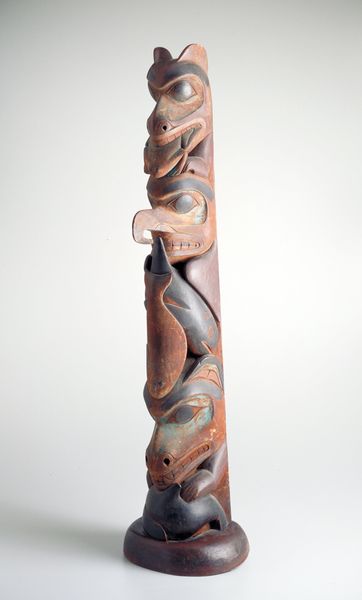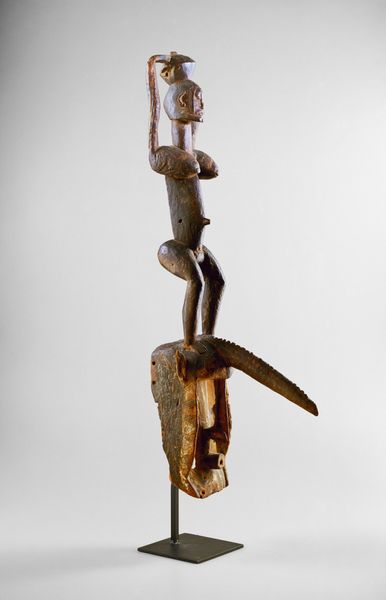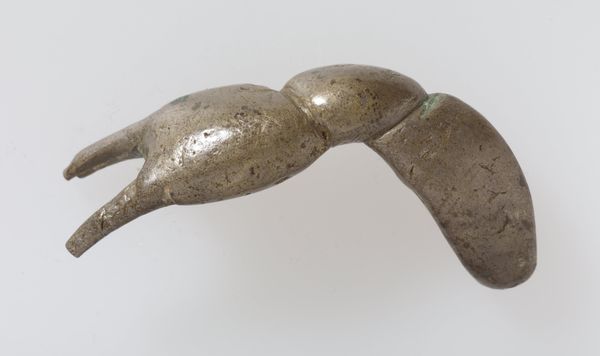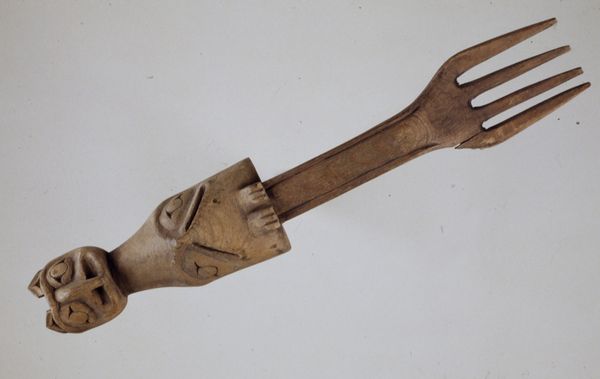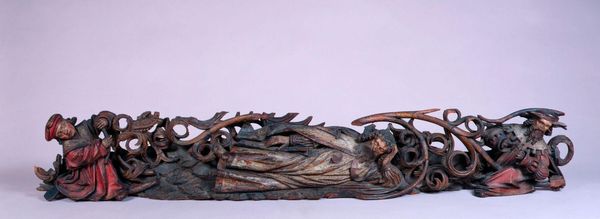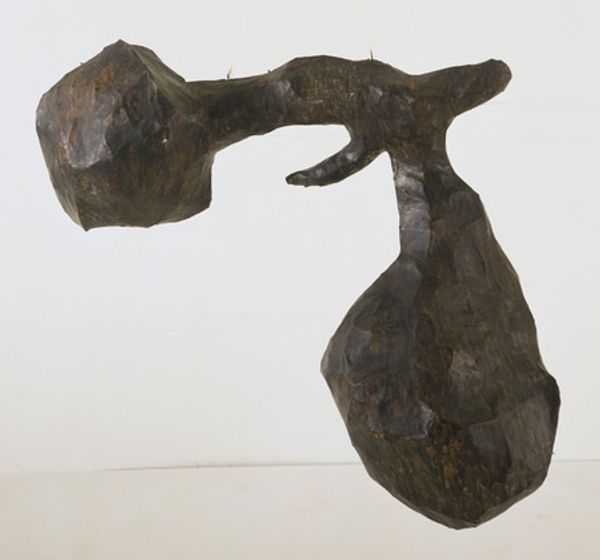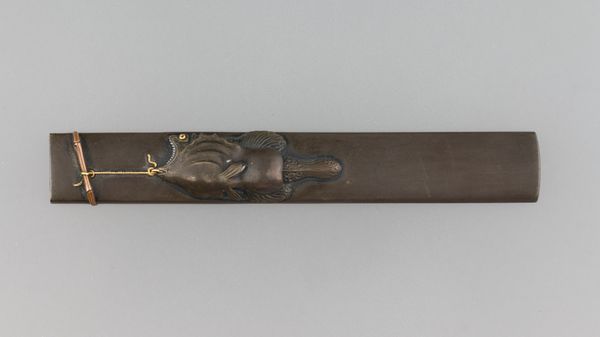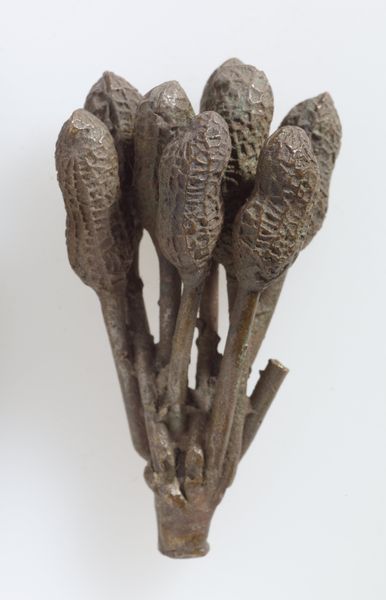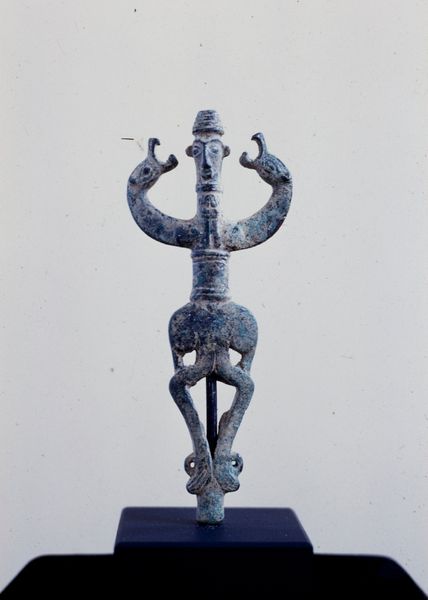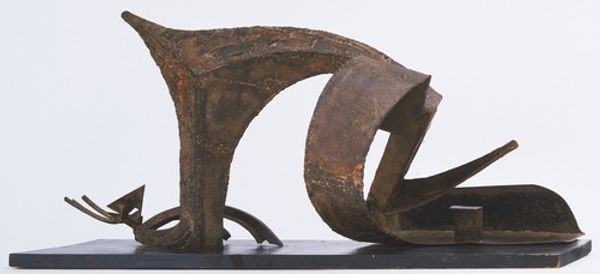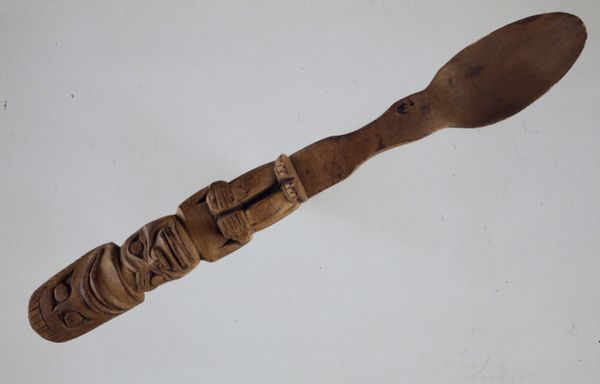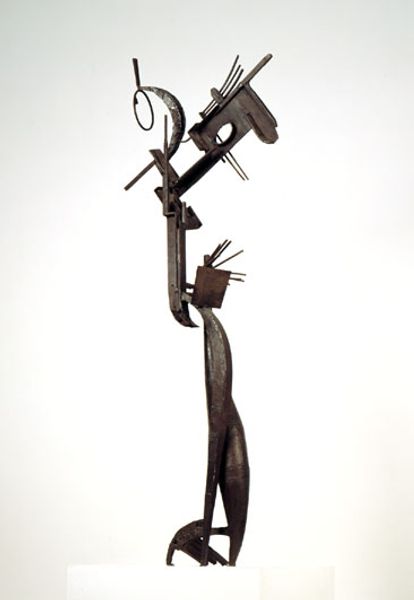
sculpture, wood
#
organic
#
sculpture
#
figuration
#
sculpture
#
wood
Dimensions: 80 x 300 cm
Copyright: Lubo Kristek,Fair Use
Curator: Let's consider "Life," a striking wooden sculpture by Lubo Kristek created in 1972. Editor: Immediately, I'm struck by its raw quality. The wood has this untamed feel, the tool marks seem almost defiant. There’s an unsettling juxtaposition of smooth curves and exposed…skeletal elements? Curator: Kristek's work often explores the themes of organic transformation and figuration. "Life" seems to embody the tensions between creation and decay, presenting us with a sort of fragmented, allegorical scene. It's impossible not to interpret it as an attempt to visualize our changing world and what role humans play within it. Editor: And that raw materiality definitely amplifies that sense of unease. Look at the way the wood grain is emphasized. It almost feels like a rejection of slick, mass-produced art objects. The emphasis on process suggests a return to handcrafted methods, an inherent understanding of labor and its value. Do you see the tool marks? It's like the artist is actively inviting the viewer to ponder the production. Curator: That directness is a constant throughout Kristek's output, although he certainly didn't shy away from using his pieces for societal critique. Viewing it through a contemporary lens, I think of the political and artistic dialogues in the '70s regarding consumerism, ecological change, or free expression. How did they allow space for introspection regarding the meaning of life, human relations, or creativity? Editor: I'm intrigued by how the form mirrors the themes, too. The organic shapes seem to grow from the very material it's created from. I see a challenge here: it isn't a clear message. There’s some commentary on materiality, sure, but it's muddled; it seems the viewer's labor of interpretation is crucial to any conclusion. Curator: Yes, I think the deliberate ambiguity plays an important role. It allows different audiences to project their anxieties and beliefs onto the piece. Editor: I suppose ultimately, a piece like this pulls focus toward a central consideration: what is life "made of"? Materially, historically, emotionally… It leaves us to decide what its constituent pieces ultimately mean.
Comments
No comments
Be the first to comment and join the conversation on the ultimate creative platform.
